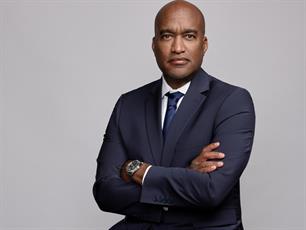Aarti Shah 16 Aug 2013 // 9:20PM GMT
 For a few weeks now, consultant and author Ty Montague’s post “Good Companies Are Storytellers. Great Companies Are Storydoers,” has sparked considerable interest on the HBR Blog Network.
For a few weeks now, consultant and author Ty Montague’s post “Good Companies Are Storytellers. Great Companies Are Storydoers,” has sparked considerable interest on the HBR Blog Network.
Montague makes a compelling assertion that storytelling is a powerful business tool and has data that backs this up. Storydoing companies — like Red Bull, TOMS shoes, Warby Parker and Tory Burch — infuse storytelling into all aspects of the brand experience: customer service, product design, and of course, marketing/PR, etc. But storytelling companies mistakenly silo this within marketing departments.
The piece breaks down six criteria for identifying a storydoing company:
-
They have a story
-
The story is about a larger ambition to make the world or people's lives better
-
The story is understood and cared about by senior leadership outside of marketing
-
That story is being used to drive tangible action throughout the company: product development, HR policies, compensation, etc.
-
These actions add back up to a cohesive whole
-
Customers and partners are motivated to engage with the story and are actively using it to advance their own stories
When reading these, it occurred to me that a huge lot of companies (and agencies) would claim to adhere to these six tenets. Yet, as we all know, rockstars like the ones mentioned above are hardly the norm. I asked Montague if there any of the six that are especially crucial for a true storydoing company.
“The most important one that many companies might believe they have -- but many of them don’t actually enact -- is a quest, a story that defines their ambition beyond just commercial success,” Montague says. “Are they looking to make the world better in some tangible way. They may say, ‘yes, we’re saving the world from dandruff’ but that doesn’t really cut it.”
Drawing upon the airline industry, he says, JetBlue, Southwest and Virgin America improved the nature of air travel by introducing humanity back into an industry increasingly devoid of it. Of course air travel, at its core is relatively glamorous endeavor, but what about those makers of dandruff shampoo?
“Look at Method, they are a company that is in the fairly mundane category of cleaning products but they enact their story through design and very light viral communications,” Montague says.
A company’s story should be infused at every level of the organization, ideally, raining down from the very top. What’s appealing about this it actually creates room for PR to go back to its roots, public relations in the truest sense of the word.
“The idea of public relations can be expanded to becoming community relations between the community of customers and community of people within the company,” Montague says. “The CEO is a very busy person and the role of corporate comms is the help CEO stay responsive to community reactions to their quest.”
But what happens to agencies in this view? Agencies - no matter the discipline -- pride themselves on being the generators of "big ideas," the genesis of creativity and storytelling. But in Montague’s world, the "big idea" is the product itself and for most agencies there's no greater dread than to be looked upon as simply a tactical, execution shop.
“What I hope this means is not the end of agencies - advertising or PR -- but I hope it means we draw them closer to the inner workings of a company,” Montague said. “You look at the relationship the Media Arts Lab has with Apple where they spent two hours a week with Steve Jobs going through work in progress. That’s the kind of relationship agencies should aspire to.”

































.jpg)

















